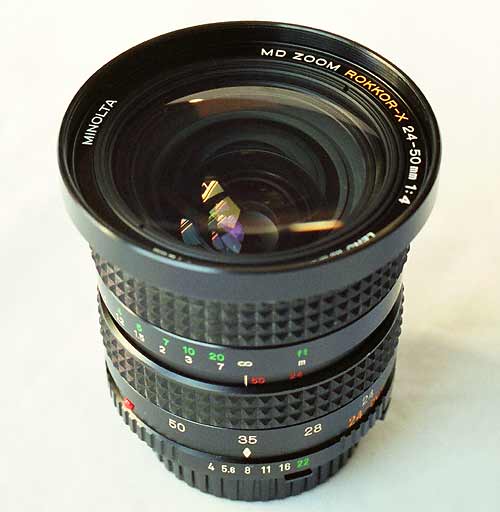
In the mid 1970's Minolta only had four zoom lenses available to photographers, however with the development of computer aided design in the late 1970's the market for zoom lenses exploded, driven by the upsurgence of third-party lens manufacturers. To meet this growing demand Minolta released an extensive range of zoom lenses, and by 1982 there were 13 Minolta zooms available, covering the focal lengths from 24mm to 500mm.
In 1983 the Minolta catalog records its price as Y94,000, over twice the price of the 24-35mm f/3.5 (Y46,000), and more expensive than the 135mm f/2 and 200mm f/2.8. It is possible that this price reflected the complexity of costruction (13 elements in 10 groups), however personally I believe that Minolta felt the price was justified based upon the performance and range of the zoom, which was exceptional for its era. So the question is, how good is it when compared to prime lenses?




































